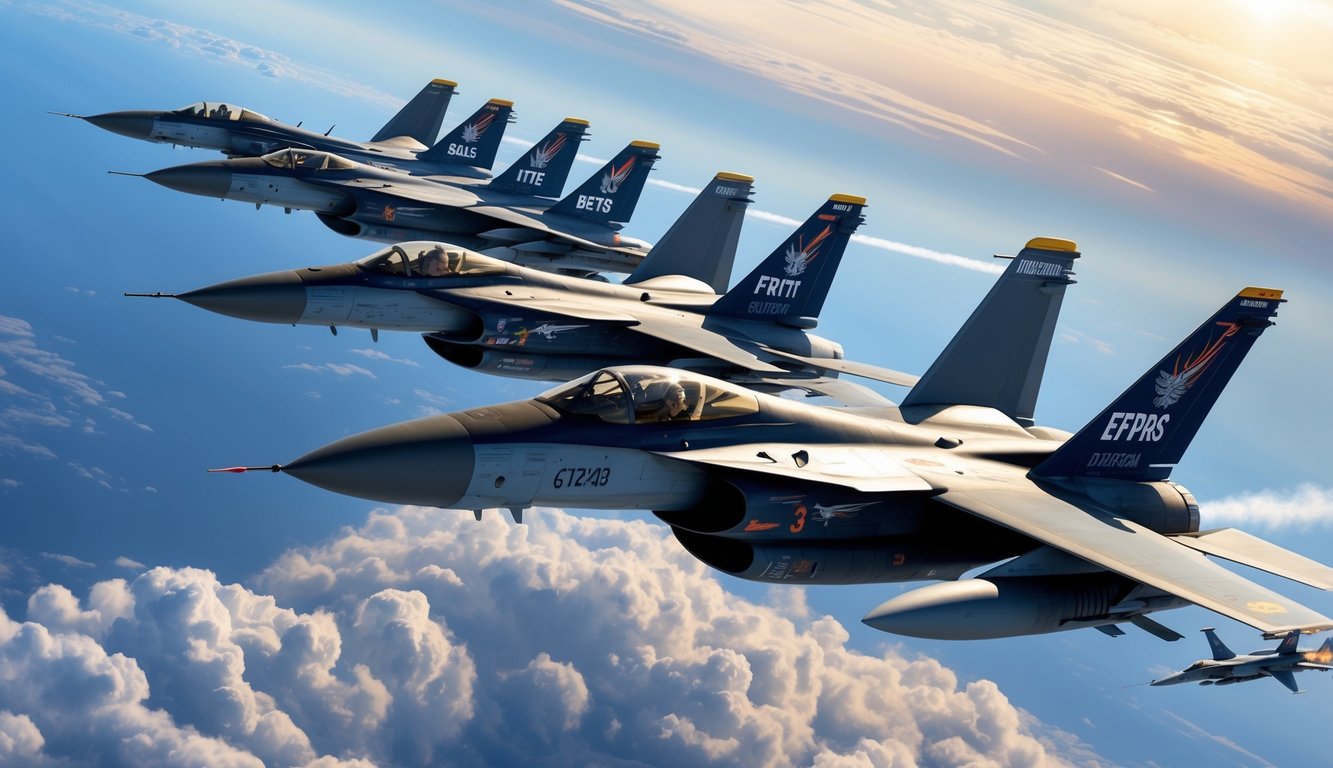Military call signs are more than just appealing nicknames; they embody a captivating aspect of military culture, characterized by creativity, humor, and a hint of toughness.
These names often encapsulate a pilot or soldier’s personality, significant accomplishments, or even comical blunders.
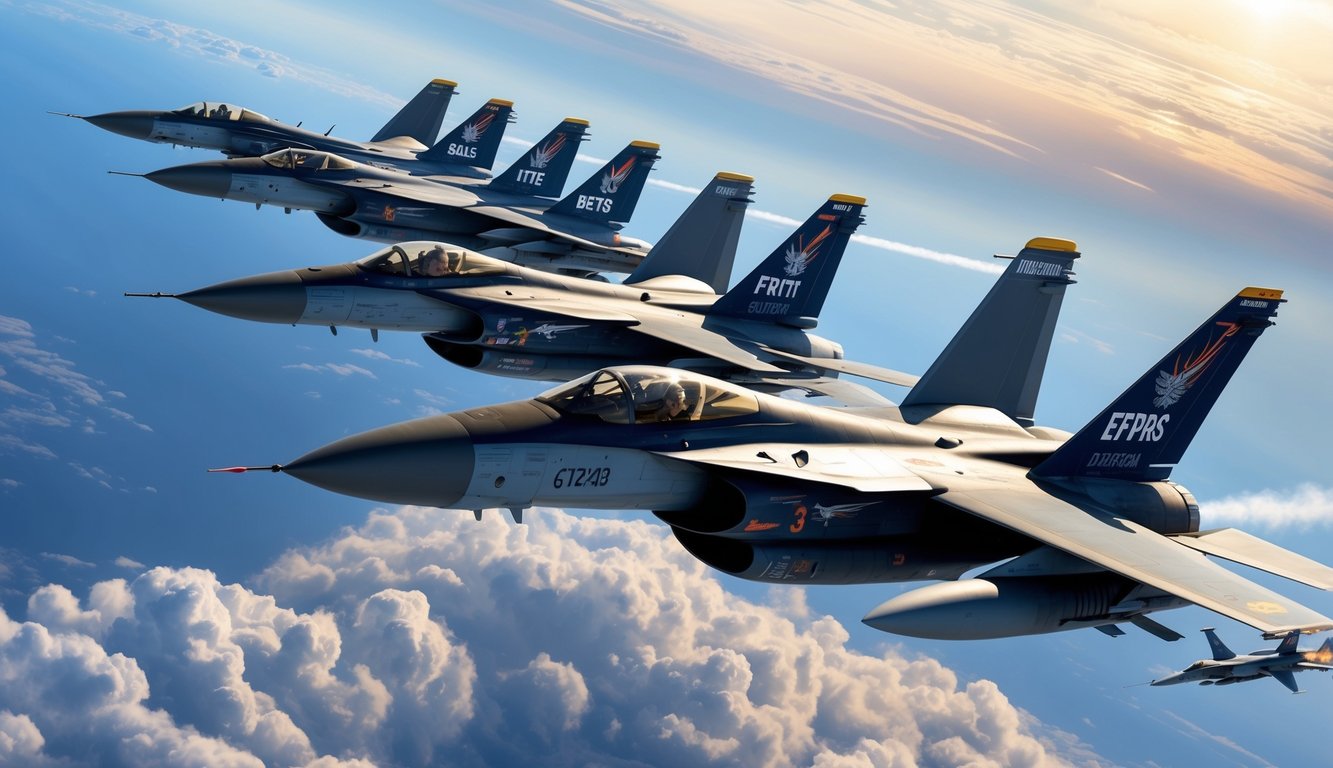
Call signs like “Maverick,” “Bone,” or “The Demon” are steeped in rich stories and meanings that extend beyond their literal definitions. They often signify an individual’s skills, eccentricities, or memorable events from their military journey.
Some arise from inside jokes, while others pay tribute to revered figures or aircraft.
It might surprise you to discover that many military personnel do not have the liberty to select their own call signs.
Usually, these are awarded by fellow service members, often infused with humor or irony.
This custom enhances camaraderie and fosters unforgettable memories among those who serve.
Key Takeaways
- Military call signs weave creativity, humor, and personal narratives into distinctive identifiers
- Often assigned by peers, call signs can mirror personality traits or unforgettable events
- These nicknames contribute to camaraderie and forge lasting memories within military service
The History and Legacy of Military Call Signs

Military call signs boast a rich legacy that spans more than a century, evolving from basic identifiers into significant symbols of identity and brotherhood among service members.
Origins in World War I and II
Call signs first emerged during World War I as straightforward codes to identify aircraft and units, with simple letter-number combinations like “K-2” or “Echo-7” used over crackling radios.
These early iterations were mainly functional, designed to reduce confusion amidst chaotic battlefield communications.
World War II marked the transition to more sophisticated call signs.
Iconic examples such as the “Enola Gay,” the B-29 that dropped the atomic bomb on Hiroshima, became well known.
Naval vessels adopted call signs as well, with carriers like “Hornet” and “Enterprise” becoming household names.
As aerial combat escalated, fighter squadrons began developing unique call signs to elevate morale and strengthen unit identity, with pilots proudly embracing nicknames that tied back to their squadrons.
Modern Warfare Evolution
Following World War II, call signs gained significant personal importance.
During the Vietnam War, colorful names like “Phantom” and “Thud” emerged, reflecting aircraft types.
Individual pilots earned their call signs based on personality traits or unforgettable incidents.
Today, call signs are entrenched in military culture, prevalent across all branches, from Navy SEAL teams to Air Force squadrons.
These identifiers foster camaraderie, with each call sign telling a unique narrative.
The advent of new technologies has also led to adaptations in the use of call signs, with drone operators and cyber warfare units employing distinctive code names in their operations.
Importance and Application
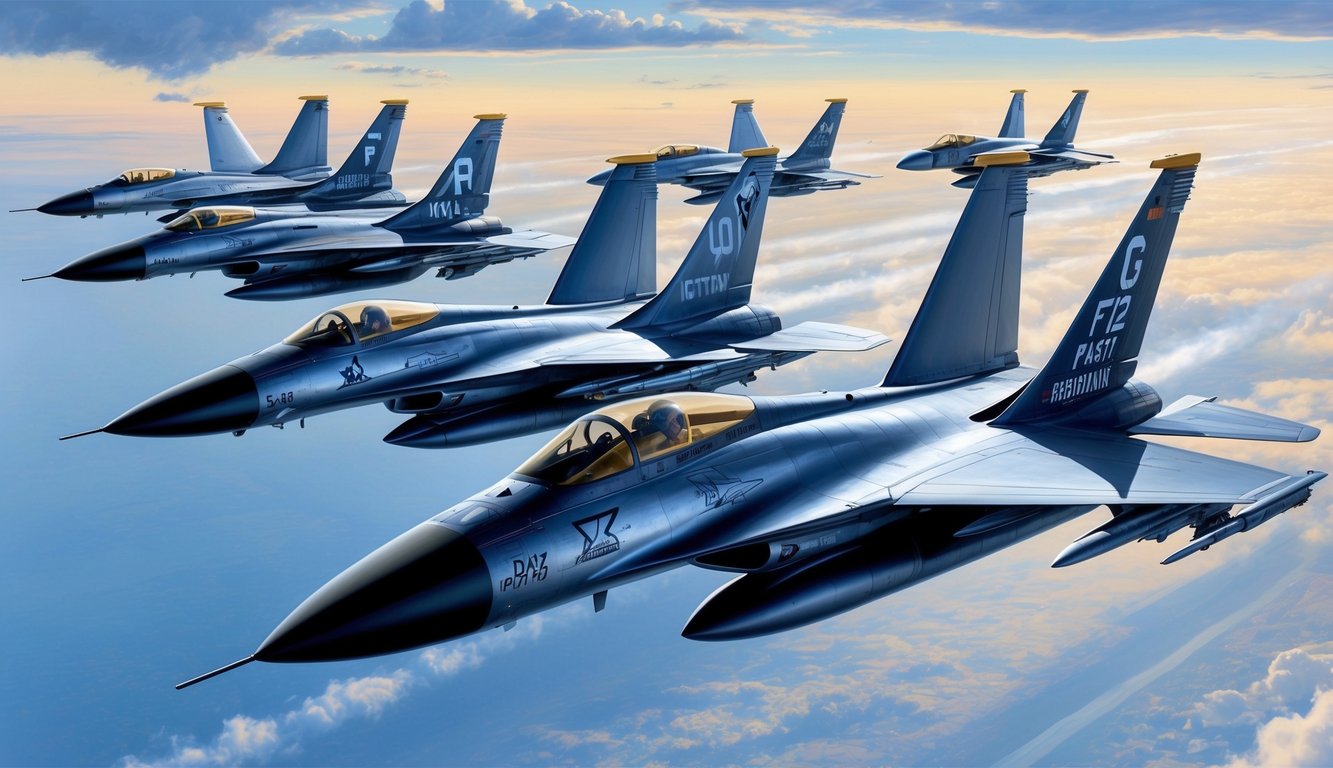
Military call signs serve a vital role in operations and communication, providing distinct identifiers for personnel and units while improving security and efficiency.
Call Signs in Military Communications
Call signs streamline radio communication, facilitating quick speaker identification.
They are used extensively by pilots, ground units, and command centers for rapid information exchange.
Their significance becomes pronounced during high-pressure scenarios where every second matters.
Additionally, call signs nurture camaraderie and team spirit.
You could be known by a nickname reflecting your personality or memorable moments, which can enhance morale and forge strong bonds among squad members.
In joint operations, call signs help to differentiate allied forces, simplifying communication and minimizing potential confusion on the battlefield.
Operational Security and Call Signs
Call signs are pivotal in maintaining operational security, concealing real identities and unit designations from potential listeners.
This complicates the adversary’s efforts to gather intelligence or track specific individuals.
Military units often rotate call signs to bolster security, with adjustments made prior to major operations or at regular intervals.
This practice keeps adversaries guessing and prevents valuable information from being pieced together.
Furthermore, call signs facilitate information compartmentalization, limiting awareness of actual names and ranks, thereby reducing the risk of sensitive information falling into the wrong hands during intercepted communications.
Forming a Military Call Sign
Military call signs are integral to aviation culture, serving practical functions beyond being cool nicknames.
The Unwritten Rules of Call Sign Assignment
Call signs are typically assigned rather than chosen.
They’re usually given by peers and superiors and are often based on notable incidents, personality traits, or playful takes on names.
Complaining about your call sign could lead to an even worse one.
Over time, call signs can evolve.
As careers progress, a new name may emerge to reflect accomplishments or experiences.
Some call signs have an ironic twist: a tall pilot might be dubbed “Shorty,” while a quieter individual could be called “Loudmouth.”
Call Sign Generators and Assignment Procedures
While online call sign generators are available, they’re not utilized in official military contexts and mainly serve entertainment purposes for civilians.
In actuality, the process is more organic.
New pilots often receive temporary call signs during training, typically based on their last names or training numbers.
Permanent call signs are generally bestowed after significant events or once pilots have fully integrated into their squadron, a process that may take weeks or months.
Certain units host formal “naming ceremonies,” in which call signs are officially assigned, often accompanied by storytelling, making for memorable occasions.
Ultimately, your call sign becomes part of your identity in the air, serving as your identifier during missions among fellow pilots and air traffic control.
Notable Call Signs from History
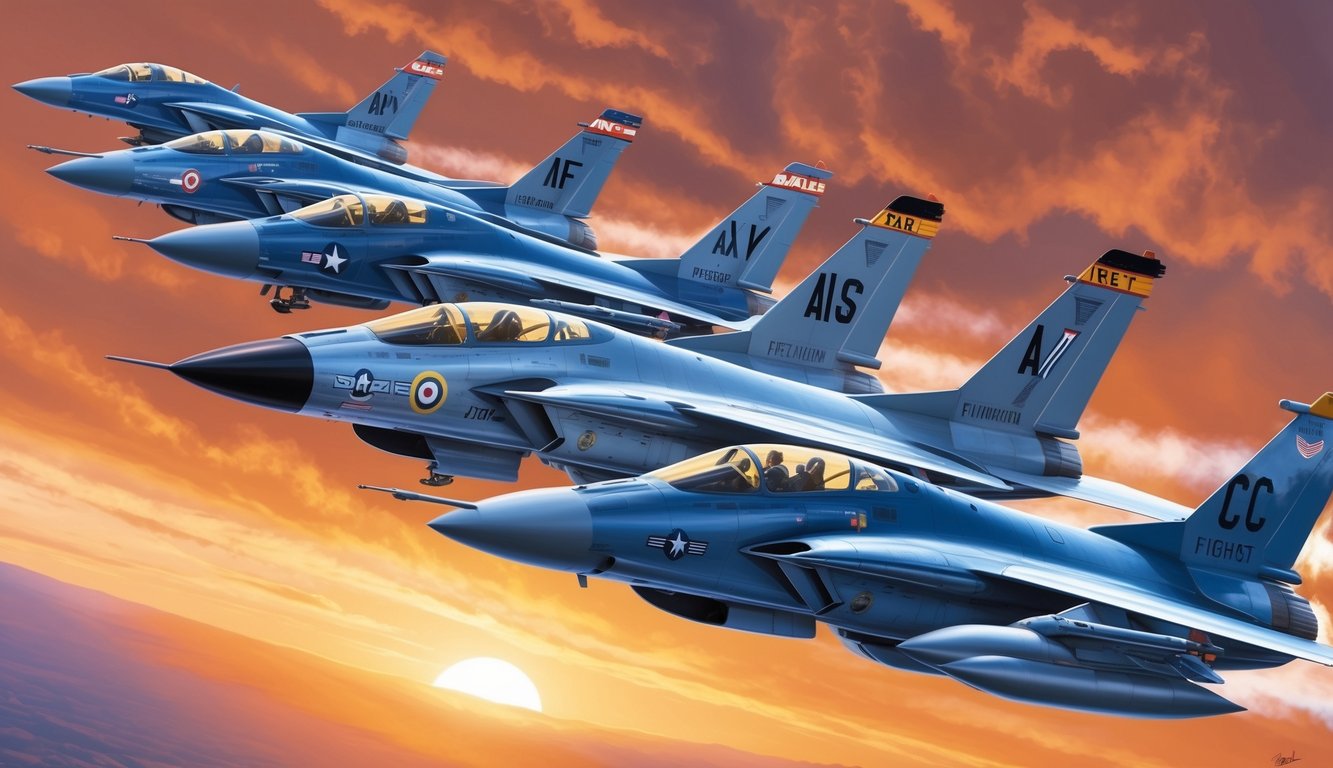
Military call signs have made a lasting impression on history, becoming legendary themselves, some even transcending into popular culture and captivating global audiences.
Famous Call Signs and Their Origins
Among the most recognizable call signs is “Maverick,” largely popularized by Tom Cruise’s character in Top Gun.
In reality, many pilots have earned this name for their adventurous flying abilities.
“Ghost” is another iconic call sign, often assigned to pilots notorious for their stealthiness, who can seemingly vanish during missions.
Tales of “Ghost” pilots pulling off incredible feats without detection are not uncommon.
“Demon” pertains to the B-1 Lancer bomber and reflects the aircraft’s impressive capabilities and formidable reputation.
Hearing “Demon” on the radio signals an impending powerful presence.
Call Signs Immortalized in Popular Culture
“Iceman” gained fame through Top Gun, representing cool-headed pilots who excel under pressure and making it a desirable nickname for those with nerves of steel.
“Viper” signifies agile and lethal pilots and stands as a call sign to aspire to, representing speed and precision in the cockpit.
“Pyro” has made its mark in military folklore, usually assigned to pilots who display a dramatic flair or experience fiery incidents.
If you’re referred to as “Pyro,” you likely have some thrilling stories.
Traditions Across Military Branches
Call sign traditions differ among military branches, with each service boasting distinct customs for assigning nicknames to personnel and units that reflect their unique cultures and missions.
United States Air Force and Aviator Nicknames
In the U.S. Air Force, aviator call signs are a time-honored tradition, frequently utilized within squadrons and during missions.
Pilots typically do not choose their own call signs; they are assigned by peers based on personality traits, memorable incidents, or physical characteristics.
Some call signs reference aircraft names; the B-1 bomber is known as “Bone,” a clever play on “B-One.” Pilots flying this aircraft may adopt similar call signs.
Marine Corps and Army: A Comparison of Call Signs
Call signs in the Marine Corps and Army generally differ from those in the Air Force.
In these branches, call signs are utilized more for units rather than individuals.
Marine platoons might adopt animal names like “Lion” or “Tiger,” whereas Army units may use color-based designations like “Red Six” for a company commander.
Individual call signs exist but are less prominent and often serve more functional purposes than their Air Force counterparts.
Both the Marine Corps and Army allow call signs to change depending on missions or locations, providing flexibility for enhanced operational security and clearer communication in the field.
Call Signs in Action
Call signs are critical to military operations, fostering teamwork and improving communication in high-pressure environments.
They function as more than mere nicknames, becoming a vital aspect of a unit’s identity and effectiveness.
Teamwork and Camaraderie Through Nicknames
Call signs often create a distinctive bond within squadrons.
These nicknames typically embody personal traits or notable events, making them memorable and easily used.
For instance, a pilot might be dubbed “Maverick” for their audacious flying, conveying their reputation to fellow team members.
In both air and ground contexts, aviators consistently use these call signs, serving to establish trust and understanding within the unit.
When you belong to a squadron, your call sign becomes your identifier.
This shared vocabulary fosters connection among service members, particularly during extended deployments or stressful missions.
Your call sign serves as a reminder that you’re part of something greater than yourself.
Call Signs in Combat Scenarios
In battle, effective communication can be pivotal to success.
Call signs excel in these scenarios as they are brief, distinctive, and easily understandable over radio traffic.
You might hear “Viper Lead, this is Eagle Two” during missions, which clearly identifies speakers and recipients.
This method is far quicker and clearer than using full names or ranks.
Additionally, call signs enhance security.
If enemy forces intercept communications, they won’t immediately discern the identities involved, an important factor in maintaining operational secrecy.
For ground units, recognizing aircraft call signs assists in quickly identifying friendly air support.
Knowing that “Demon” is set to provide cover can elevate morale and coordination in tense circumstances.
Contemporary Military Call Signs
Military call signs are continually evolving, adapting to advancing technologies and operational demands, remaining an indispensable aspect of communication and culture within the armed forces.
Technological Impact on Call Signs
Advancements in digital communication have changed how call signs are utilized in military contexts.
Encrypted radio systems often assign temporary call signs for each mission, enhancing security and complicating enemy efforts to monitor specific personnel or units.
The emergence of voice recognition technology has facilitated the use of more complex call signs, as pronunciation clarity is less critical.
You’ll frequently hear names like “Nighthawk” or “Thunderbolt” used in communication.
Drones and unmanned vehicles are assigned unique call signs, typically reflecting their operational capabilities or purposes. “Reaper” and “Predator” are two examples commonly referenced in media reports.
Current Trends and Call Sign Significance
Today’s call signs often mirror pop culture references or unit-specific inside jokes.
You might encounter names inspired by movies, video games, or memes, such as “Iron Man” or “Skywalker,” alongside more traditional identifiers.
Personalization is becoming increasingly popular, allowing individuals to request specific call signs, albeit subject to approval.
This approach seeks to create more meaningful or motivational nicknames.
Gender-neutral call signs are gaining traction as military branches embrace greater inclusivity.
Names like “Maverick” or “Viper” can now be adopted by any pilot, irrespective of gender.
Beyond combat roles, call signs are finding application in technology sectors, space operations, and diplomatic arenas, continuing to serve as essential identifiers in the intricate landscape of modern military communication.
Cultural Influence and Media Representation
Military call signs have deeply influenced popular culture, transforming into iconic symbols of valor and skill, their reach extending beyond the armed forces, shaping public perceptions of military life.
Military Call Signs in Film and Literature
You’ve likely encountered memorable military call signs in films like “Top Gun,” where characters like Maverick and Goose have become cultural touchstones.
These catchy nicknames add excitement and depth to fictional aviators and soldiers.
Books and television shows often showcase military call signs, using them to create memorable characters and provide quick insights into personalities or roles within a unit.
Several real-life call signs have shaped fictional counterparts, such as “Phantom,” which gained popularity following its use in Vietnam and continues to appear in various military narratives.
The Widespread Impact of Military Jargon
Military jargon, especially call signs, has permeated common vernacular, with phrases like “roger that” and “copy” making their way into everyday dialogue.
Call signs have also inspired naming conventions in diverse fields; tech companies occasionally adopt similar systems for team designations or project names.
In video games, military call signs enhance realism and immersion, often becoming integral during multiplayer interactions.
Even sports teams and athletes have embraced call sign-like nicknames, drawing parallels to the camaraderie and grit emblematic of military units.
Unique and Interesting Call Signs
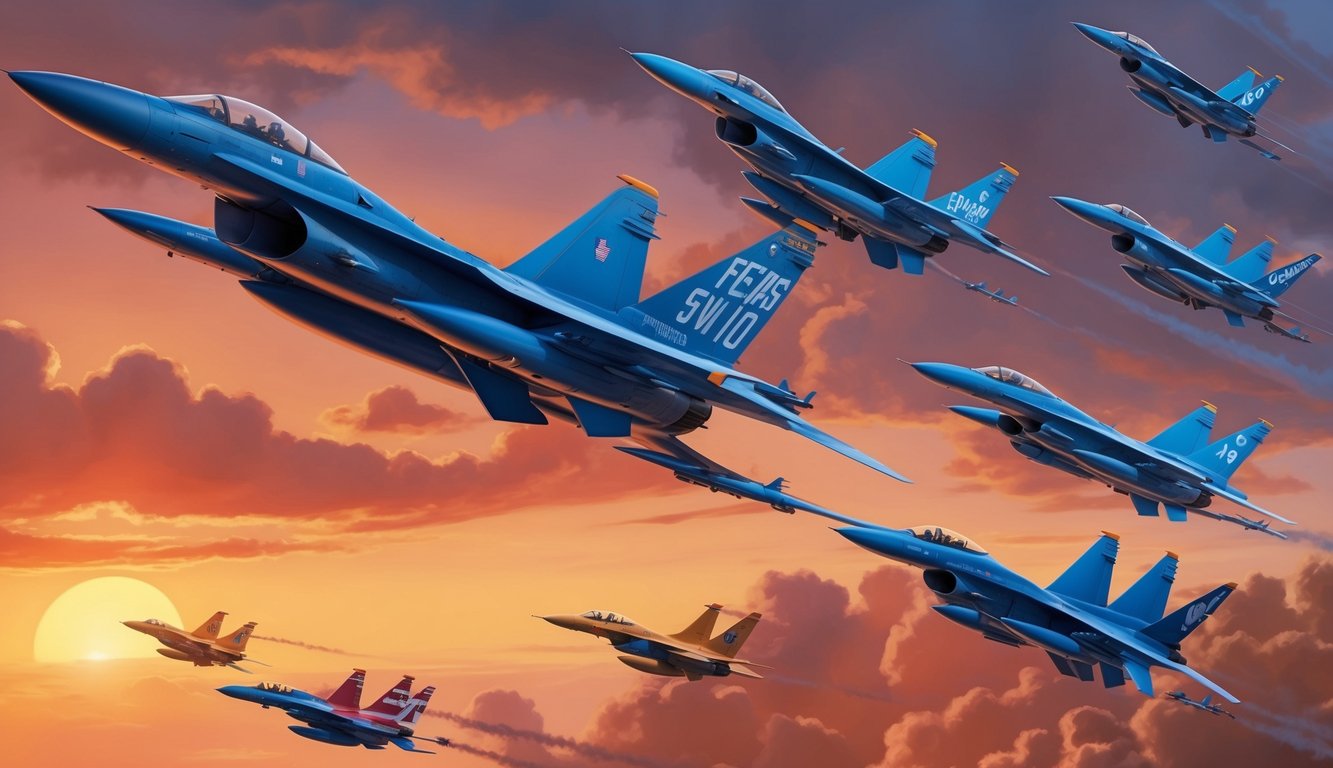
While “Maverick” is well-known from Top Gun, the realm of military call signs is vast, featuring numerous cool and unusual monikers worth exploring.
Have you heard of the pilot dubbed “Cobra”? This call sign conveys speed and lethal precision.
Then there’s “Steel Rain,” a name that suggests something formidable descending from above.
Although “Bloody Bucket” might invoke a wince, it carries a gritty allure.
For a more enigmatic feel, “Gray Ghost” sparks visions of a stealthy operative moving unnoticed through hostile terrain.
If you seek something chilling, consider “Banshee,” fitting for a pilot who revels in making noise.
Conversely, “Iron Fist” embodies raw strength and determination.
Here are a few additional noteworthy call signs:
- Chaos: For the pilot who excels amid disorder
- Pyro: An apt name for a hotshot with a penchant for fiery misadventures
- Rebound: Perhaps a nod to their few rocky relationships
- Rico: Short, catchy, and memorable
You may also come across “Utah” or “Toot”—sometimes simpler names stick the fastest.
These call signs are not only interesting but are usually accompanied by entertaining backstories.
The next time you encounter a military pilot, inquire about their call sign; you might be treated to an unforgettable saga!
Frequently Asked Questions

Military call signs capture the imagination with their blend of creativity, humor, and significance, often harboring fascinating stories and serving key functions in military operations.
How are military call signs assigned to soldiers?
Typically, soldiers do not select their own call signs; they are usually bestowed by peers or superiors based on notable incidents, personality traits, or physical traits, sometimes drawn from inside jokes or awkward moments.
This process tends to be informal, often taking place during training or deployment.
Can you share examples of cool special forces call signs?
Special forces units feature particularly captivating call signs.
Examples include “Ghost,” associated with stealth units; “Viper,” linked to elite sniper teams; and “Reaper,” which designates specialized combat groups.
These names often highlight the unit’s specialized skills or evoke fear among adversaries.
What are notable call signs from military films like Top Gun?
Top Gun brought military call signs into mainstream culture, with “Maverick” and “Iceman” becoming iconic.
Other films showcase call signs such as “Voodoo” in Behind Enemy Lines, “Hoot” in Black Hawk Down, and “Coffin” in Iron Eagle, encapsulating the essence of their respective characters.
How do tactical call signs differ from standard military call signs?
Tactical call signs are temporary and specific to missions, often changing frequently to ensure operational security.
Conversely, standard call signs generally remain with an individual or unit long-term, often possessing more personal significance.
What is involved in creating a fighter jet call sign?
Fighter pilot call signs usually arise during training, based on a pilot’s name, flying behavior, or notable incidents.
Ironically, a tall pilot might be dubbed “Shorty.” The squadron typically has oversight, and the name must receive approval from commanding officers.
What elements make a call sign stand out as particularly ‘badass’ or memorable?
Badass call signs frequently carry an element of danger or mystique, with names like “Reaper,” “Phantom,” or “Havoc” exuding power.
Memorable names often combine wit with a compelling backstory.
The best call signs encapsulate something unique about the individual or unit, allowing for instant recognition.

